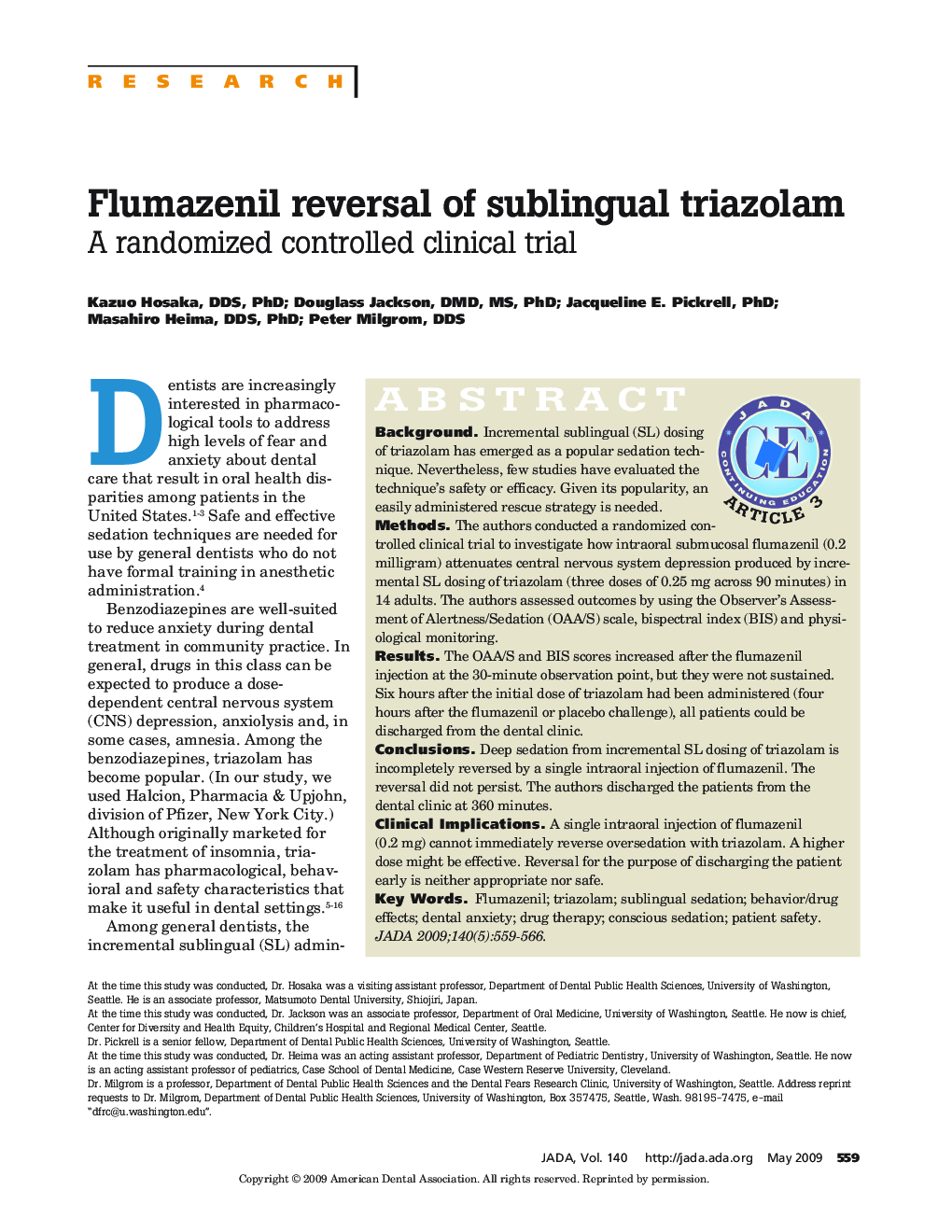| Article ID | Journal | Published Year | Pages | File Type |
|---|---|---|---|---|
| 3138862 | The Journal of the American Dental Association | 2009 | 8 Pages |
ABSTRACT BackgroundIncremental sublingual (SL) dosing of triazolam has emerged as a popular sedation technique. Nevertheless, few studies have evaluated the technique's safety or efficacy. Given its popularity, an easily administered rescue strategy is needed.MethodsThe authors conducted a randomized controlled clinical trial to investigate how intraoral submucosal flumazenil (0.2 milligram) attenuates central nervous system depression produced by incremental SL dosing of triazolam (three doses of 0.25 mg across 90 minutes) in 14 adults. The authors assessed outcomes by using the Observer's Assessment of Alertness/Sedation (OAA/S) scale, bispectral index (BIS) and physiological monitoring.ResultsThe OAA/S and BIS scores increased after the flumazenil injection at the 30-minute observation point, but they were not sustained. Six hours after the initial dose of triazolam had been administered (four hours after the flumazenil or placebo challenge), all patients could be discharged from the dental clinic.ConclusionsDeep sedation from incremental SL dosing of triazolam is incompletely reversed by a single intraoral injection of flumazenil. The reversal did not persist. The authors discharged the patients from the dental clinic at 360 minutes.Clinical ImplicationsA single intraoral injection of flumazenil (0.2 mg) cannot immediately reverse oversedation with triazolam. A higher dose might be effective. Reversal for the purpose of discharging the patient early is neither appropriate nor safe.
